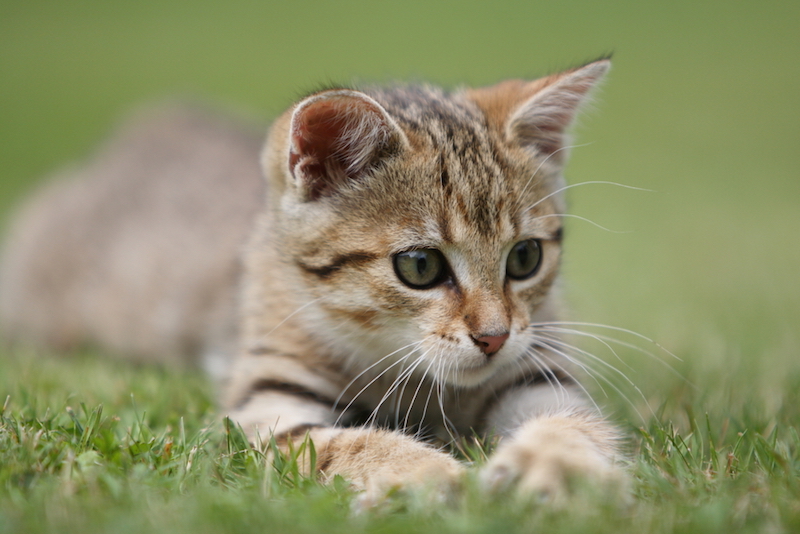House Cats Are as Big as Ping-Pong Tables (If You Count Their Hair)

Here's a mental image: The surface area of a cat, including all the fur, is roughly equivalent to the surface area of a Ping-Pong table.
If you're wondering what possible value such a factoid could have, this comparison was the result of a new study examining how animals clean themselves. Hair, after all, can both help and hinder.
"Animals likely evolved with hair in order to stay warm. But it also brings a burden," study researcher David Hu, a professor of fluid mechanics at Georgia Tech University, said in a statement. "More hair means more surface area that can trap dirt, dust and pollen." [10 Surprising Facts About Cats]
As a result, animals have come up with a variety of adaptations to stay clean, from the water-splattering shake of a golden retriever to the persnickety tongue-grooming of a Siamese cat. And those evolutionary solutions may provide inspiration for cleaning mechanical systems, including robots.
"Understanding how biological systems, like eyelashes, prevent soiling by interacting with the environment can help inspire low-energy solutions for keeping sensitive equipment free from dust and dirt," Hu said. "Drones and other autonomous rovers, including our machines on Mars, are susceptible to failure because of the accumulation of airborne particles."
Hu and his doctoral student, mechanical engineer Guillermo Amador, reviewed previous research on how animals stay clean. They also did their own calculations to find out how much of a hassle hair can be.
They first had to do some hair counts: To be clear, they didn't actually count every hair. "Instead we estimate the animal's skin surface area and then combine that with the hair density (number of hairs per unit area) to approximate the number of hairs," Amador told Live Science by email.
Get the world’s most fascinating discoveries delivered straight to your inbox.
Here are some of the hairy highlights: (For comparison, you have about 100,000 hairs on your head, assuming you still have most of them.)
- House fly: 16,000
- Honeybee: 3 million
- Squirrel: 3 million
- Luna moths and butterflies: 10 billion
To figure out each animal's true surface area, the scientists treated each hair as a cone to find its surface area, and then multiplied it by the estimated total number of hairs. They found that hair boosts an animal's surface area at least 100 times that of skin alone.
"A honeybee's true surface area is the size of a piece of toast," Hu said. "A cat's is the size of a Ping-Pong table. A sea otter has as much area as a professional hockey rink."
The diversity of cleaning strategies is as wide as the diversity of animals themselves. Ants secrete antimicrobial substances from their rear ends. Roaches lick their antennae clean. Bees have bristles on their appendages that they use to comb pollen off their bodies. Fruit flies "catapult" dust off their bodies using hairs, Amador said in the statement, a strategy that flings the foreign particles away at accelerations of 500 times Earth's gravity.
Meanwhile, cicadas have pincushion-like spikes on their wings that pierce airborne bacteria, preventing these invaders from gaining a toehold. Eyelashes, in multiple species, naturally funnel particles away from the eyes.
These low- to no-energy solutions are the sorts of things humans might want to imitate when engineering autonomous vehicles or robots that have to operate in dirty environments, the researchers wrote in the October issue of the Journal of Experimental Biology.
Live Science's Robert Roy Britt contributed to this article.
Follow Stephanie Pappas on Twitter and Google+. Follow us @livescience, Facebook& Google+. Original article on Live Science.

Stephanie Pappas is a contributing writer for Live Science, covering topics ranging from geoscience to archaeology to the human brain and behavior. She was previously a senior writer for Live Science but is now a freelancer based in Denver, Colorado, and regularly contributes to Scientific American and The Monitor, the monthly magazine of the American Psychological Association. Stephanie received a bachelor's degree in psychology from the University of South Carolina and a graduate certificate in science communication from the University of California, Santa Cruz.


